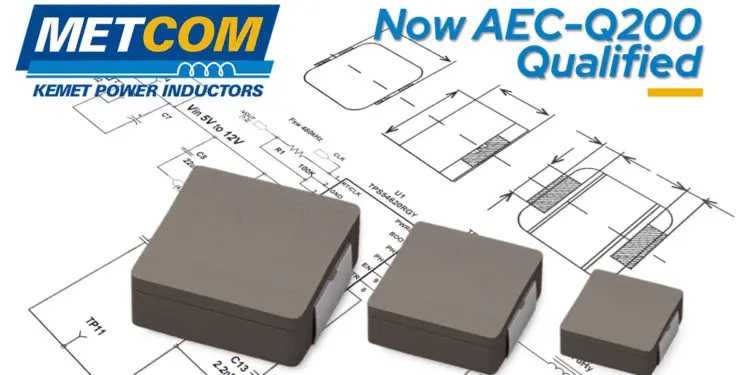KEMET Corporation a leading global supplier of electronic components, has launched a new family of metal composite power inductors to address the stringent demands of the automotive market. The MPXV product offering enhances the company’s METCOM range and is AEC-Q200 qualified for use in the automotive sector. Kemet METCOM™ for automotive offers high reliability and performance with best in class EMI shielding for low magnetic flux leakage.
The new power inductors provide efficient power conversion while minimizing Electromagnetic Interference (EMI) and are ideal for use in DC to DC switching power supplies for the growing number of Electronic Control Units (ECUs) found in automotive systems. According to Fortune Business Insights* the automotive ECU market is forecast to reach USD 12.92 Billion by 2026, a CAGR of 11.9% in seven years.
The MPXV series is optimized for use within the automotive market, where the increased demand and adoption for electronic systems necessitates high efficiency, low self-heating, and low power losses. The MPXV series inductors’ metal composite core has class-leading high permeability to meet these requirements. The qualities of the MPXV inductors make them ideal for use in designs where thermal considerations are vital to avoid adverse effects to other critical systems.
Available in various industry standard SMD footprints, MPXV inductors can operate at temperatures up to 155°C and feature low electrical noise allowing them to be used in all areas of the vehicle – including the challenging operating environments found under the hood and in the powertrain. The metal composite material is molded around the inductor coil core and, therefore, acts to shield neighboring electronics from the magnetic flux that might otherwise cause interference in sensitive systems. These devices are qualified to standards set by the Automotive Engineering Council’s Q200 (AEC-Q200) requirements and they are suitable for even the most demanding areas of automotive applications.
“Our experience and expertise in high permeability inductor material development and production allow us to introduce devices with differentiated performance to meet and exceed the needs of the latest applications in sectors such as automotive,” said Dr. Philip Lessner, KEMET Senior Vice President and Chief Technology Officer. “With their robust performance, high reliability and energy-saving features, MPXV inductors are a perfect example of this and provide a dependable, easy-to-design-in solution.”
KEMET’s MPXV series is available immediately via KEMET distributors. To learn more about the company’s metal composite power inductors visit www.kemet.com/metcom.
*Source: Automotive Electronic Control Unit (ECU) Market Size, Share & Industry Analysis, By Application (Powertrain, Braking Systems, Body Electronics, Adas, Infotainment), By Vehicle (Passenger, LCV, HCV, Electric Vehicle), and Regional Forecasts 2019-2025, Fortune Business Insights, November 2019































